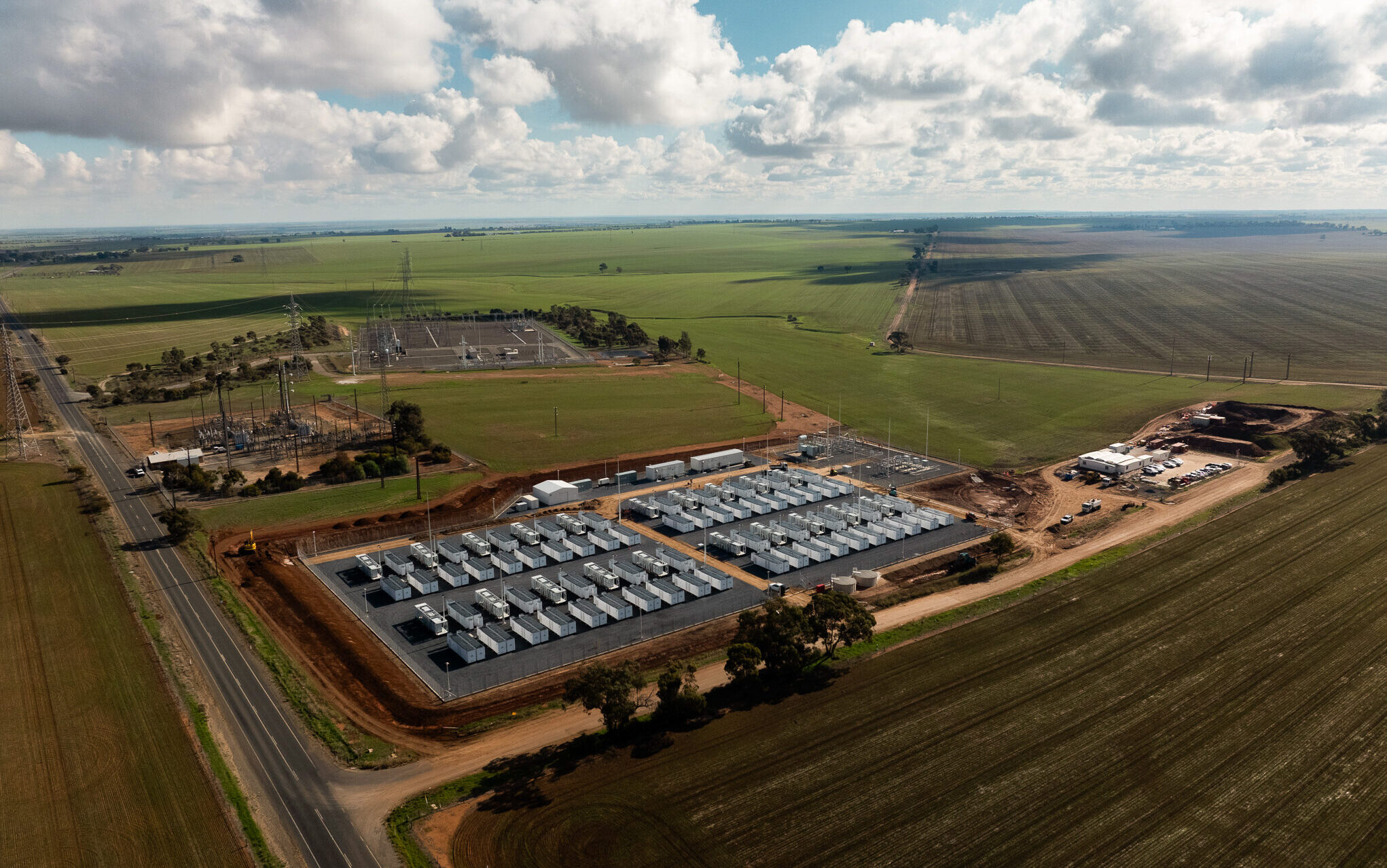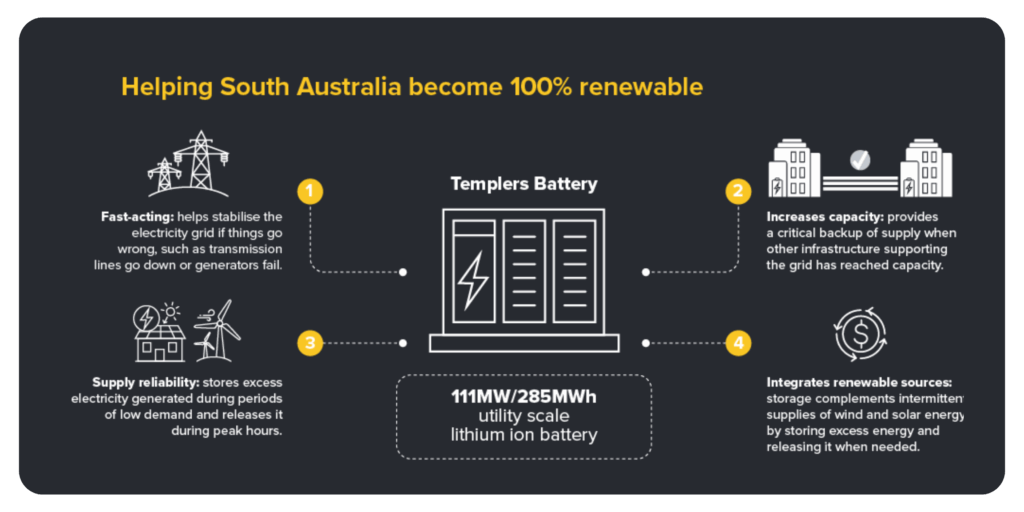



Battery Storage Energy Systems (BESS), such as the Templers Battery Project, offer a rapidly deployable solution, providing significant amounts of dispatchable energy storage to the National Energy Grid and increasing its capacity for renewable energy generation.
Once operational, the project will provide 111MW/330MWh of storage and dispatchable, fast-response generation and load into the SA market, contributing to South Australia’s emissions reduction target.

PROJECT FINANCIAL CLOSE
All approvals and financial commitments are obtained and Financial Close has been completed.
CONSTRUCTION COMMENCES
Site construction works have commenced in Q2 2024.
FULLY OPERATIONAL
We expect the project to take 17 months to complete and are expecting the battery to be fully energised and providing services to the South Australian grid by Q2 2025.
PROJECT COMPLETE

THE COMMUNITY
ZEN is committed to forming lasting relationships with the communities in which we operate and key stakeholders, including the Light Regional Council, to ensure a successful outcome throughout our operations.
We acknowledge the Ngadjuri people as the Traditional Custodians of the land, waters and knowledge related to the project’s site. In our work, we recognise the importance of Country, not just as a place, but also as it maintains community, family, kin, lore, and language. We pay our respects to Elders past, present and emerging.
Progress of Templers Battery
Construction of Templers Battery Project was completed in July 2025 and the associated compound and workforce onsite have since demobilised. The facility has been left in a clean and complete state with sealed internal roads and carefully constructed civil components to ensure the ongoing cleanliness and accessibility of the site.
The clean and established surroundings, lighting/openness, permanent CCTV, standard substation perimeter fencing and quality electrical infrastructure provide security and robustness that will ensure the ongoing safe and reliable operation of the facility for operators and the community.
Environmental Updates
Thanks to its compact footprint and well-maintained erosion control measures, Templers has had minimal impact on the surrounding environment.
Our revegetation initiatives are restoring native flora, supporting biodiversity, and fostering a greener future, with the aim of promoting habitat growth for the local birds and insects.
Topsoil placement and seeding has been undertaken as required for sediment/erosion control. A total of 160 natives have been planted on the Southern and Eastern facelines, which are expected to grow several metres in height, screening the Facility from the direction of Templers and Power Roads.
Future Direction
Templers is progressing through late stages of commissioning. The Substation was successfully energised in April 2025 and from which time the batteries onsite have been progressively brought online over several months as part of a staged and controlled process to ramp up the output of the facility. A small workforce will frequent the facility for the final stages of commissioning and into commercial operations expected later this year.
FAQS
The project will utilise lithium ion battery cells, specifically lithium-iron-phosphate (LFP) chemistry. LFP has low thermal runaway risk and is being deployed on other utility scale batteries around Australia at present. The battery system enclosure being used include active fire detection and suppression to minimise fire risk.
ZEN Energy is committed to ensuring the projects we develop are built using industry-leading processes and equipment. ZEN is committed to using the best practice in recycling to ensure the least amount of landfill waste is accumulated, as the equipment is replaced throughout the lifespan of the powerplant. Domestic recycling operations capable of handling li-ion batteries exist now but are limited in capacity, but significant growth is forecast in response to the scale of demand for Li-ion storage. Whilst occasional faulty cell replacements are anticipated during the operational life, the majority of battery cells should last 20 years or longer, at which time a major recycling campaign would be undertaken.
Utility-scale batteries allow energy companies like ZEN to store a proportion of the clean energy created when the sun is shining or the wind is blowing in abundance, and feed it into the grid when demand is high. The ability to predictably control the dispatch of the battery and respond to market operator instructions is a key attribute. The Templers Battery will also provide services such as frequency and voltage control which can also aid in supporting the power system.
The project has received Crown Development Approval under section 131 of the Planning, Development and Infrastructure Act 2016. The project site (a small parcel of rural agricultural land adjacent the existing ElectraNet substation) was selected for its anticipated low impacts, and was subject to extensive development phase studies to secure approval – inclusive of EPBC self-assessment, Cultural Heritage, Ecology, Noise, Traffic, Surface Water, amongst others. ZEN will be carefully managing our compliance with the development approval conditions throughout the lifecycle of the project, especially our construction contractor’s compliance with approval conditions during the build phase.
You can contact our team using the contact form on this webpage or by emailing our team at templers@zenenergy.com.au
